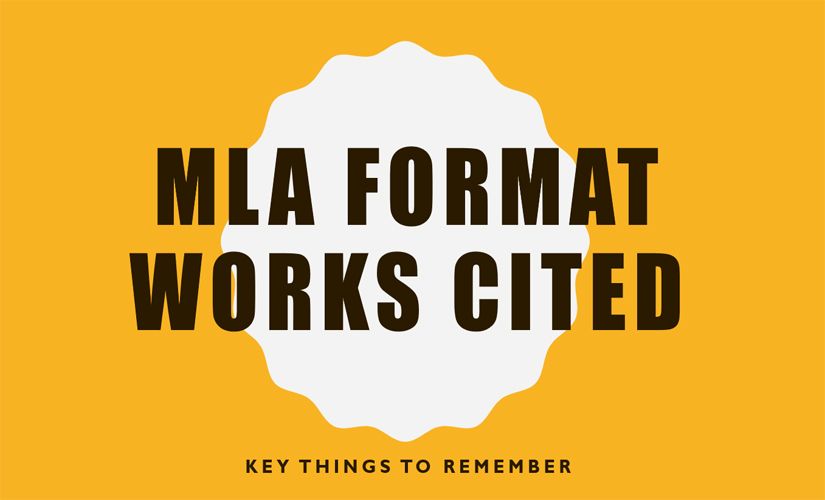Nowadays, many students at colleges and universities must know the MLA format. Since people need to complete their writing assignment, they must follow strict rules of formatting to avoid issues of plagiarism. In this case, students must follow the rules of the MLA format Works Cited, including the used sources. Therefore, this article provides the main aspects of the MLA format that must be followed in the structure of the Works Cited page.
General Aspects of MLA
Referencing Style
The Modern Language Association (MLA) referencing style has become very common in academic writing across most higher education programs among other paper formats. Basically, the presentation of the compiled list of sources in the Works Cited page requires knowledge of some basic rules. In particular, the MLA format Works Cited page reveals the rigid structure and new rules, including capitalization and italicization regulations that distinguish the referencing style.

The Structure of MLA Works Cited
The MLA Works Cited page has a strict structure format. In particular, the Work Cited page begins on a separate page and maintains the same page margins and page numbering formulation as the rest of the MLA paper format. Despite the uniqueness of the content in the Works Cited page, it adheres to the one-inch margins and page numbering system used for the essay. Moreover, students have to center the title “Works Cited” in the MLA style. However, they need to align entries to the left margin with the second and the following line indented by half an inch. In this case, people format all citation entries in this exact way as the paragraphing used in the essay body. Additionally, citation entries are double spaced, but there are no extra spaces between individual entries. In turn, students should keep spacing in the MLA format Works Cited page consistently.
Additional Rules for MLA Format
Moreover, people need to know some new rules. For example, the last version of the MLA format Works Cited has specific changes. Firstly, digital sources on the Works Cited page must include a definitive location. In this case, people provide a digital object identifier or a uniform resource locator with the “https://” eliminated. Then, they need to cover Internet identifiers to ensure that others can read the text of the source. Also, citation entries must end with a full stop. Basically, the period does not have any specific meaning beyond establishing consistency in the Works Cited page. As a result, these rules are relatively new, and most students may not be aware of the changes.
Capitalization and Italicization in MLA Works Cited
The MLA format Works Cited page has specific rules for the capitalization and italicization of different types of sources. Firstly, people must cover the titles of sources. In title case where conjunctions, articles, and prepositions, students should not capitalize it unless they begin the title. Basically, the capitalization rule is a primary concept of developing a citation entry and varies in other referencing styles. Moreover, people should regulate the italicization of titles by the nature of the work. For example, more significant works are italicized while shorter articles are placed in quotation marks. In turn, the quotation or italicization rules make the differentiation of sources much more straightforward. Summing up, these rule may appear simplistic but are essential for the correct interpretation of a citation entry.
Conclusion on MLA Format Works Cited
If people want to organize the Works Cited page properly, they must follow some specific rules for the MLA sample paper. In particular, the few rules explained in this overview are the necessary information required in developing a correct MLA format Works Cited. Basically, the highlighted formatting rules are the main aspects that maintain the structure of a Works Cited page. Other details have not been covered because they are more familiar concepts in the MLA style. Moreover, you can check the MLA Works Cited example to get more information on the format. In turn, writers should know how to cite in MLA format when following the MLA format template and MLA example.

